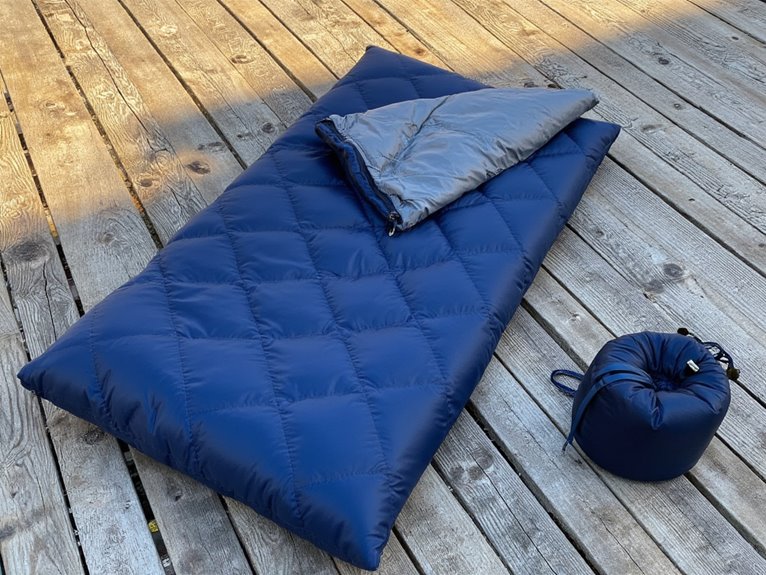Dolomites Hut-to-Hut Hiking Trip: A Scenic Adventure in the Italian Alps
Begin an incredible journey in the Italian Alps with a Dolomites hut-to-hut hiking trip. Roam through picturesque landscapes, inhale the fresh mountain air, and delight in the charm of traditional alpine huts. The trails cater to various skill levels, offering a perfect adventure for everyone. September boasts ideal weather, enhancing the breathtaking experience. Behold stunning mountain views, immerse yourself in the unique flora and fauna, and relish every step of this scenic adventure. Join me on this unforgettable escapade through the Italian Alps.
We are supported by our audience. When you purchase through links on our site, we may earn an affiliate commission, at no extra cost for you. Learn more. Last update on 31st December 2025 / Images from Amazon Product Advertising API.
Overview of Dolomites Hut-to-Hut Hiking
Starting a Dolomites Hut-to-Hut hiking expedition immerses me in a world of stunning landscapes and secluded mountain refuges. The Dolomites, part of the Italian Alps, offer a picturesque setting for trekking enthusiasts seeking an adventure off the trodden path. Winding through the Dolomite mountains on well-marked trails, hikers can choose routes that cater to various skill levels, from easy walks to more challenging treks. The allure of these hut-to-hut hiking trails lies not only in the physical challenge but also in the opportunity to investigate remote and diverse natural environments.
Traversing through rocky walls, valleys, and peaks, the Dolomites provide a rich tapestry of landscapes that change with every turn of the trail. The network of mountain huts strategically placed along the routes offers a comfortable respite for hikers, allowing them to rest and refuel while surrounded by the beauty of the mountains. These huts, spread across nine mountain ranges, are essential for those setting off on multi-day treks in this stunning region.
September, considered the prime month for hiking in the Dolomites, presents ideal weather conditions and fewer crowds, enhancing the overall experience of trekking through this scenic paradise. With each step along the trails, I am fascinated by the raw beauty and tranquility of the Dolomites, making this hut-to-hut hiking adventure a truly unforgettable journey.
Planning Your Hiking Itinerary
Diving into the intricate network of trails and accommodations is crucial for creating a successful Dolomites hut-to-hut hiking itinerary. When planning your hiking itinerary in the Italian Dolomites, several key factors come into play:
- Duration: Consider the length of your hike, which can vary from 5 to 16 days, depending on your preference and availability. Longer hikes allow for a more immersive experience, while shorter ones are great for a quick adventure.
- Route Difficulty: Factor in the different difficulty levels of the routes, from regular hiking trails to challenging via ferrata experiences. Matching the route difficulty with your hiking skills ensures a safe and enjoyable journey through the mountains.
- Route Selection: Delve into diverse routes like Alta Via 1, Rosengarten Traverse, and Dolomiti Brenta Circuit for a mix of landscapes and experiences. Each route offers unique perspectives of the stunning Dolomites, providing a rich tapestry of natural beauty to immerse yourself in.
Essential Gear and Packing Tips
Equipping yourself with the necessary gear for a Dolomites hut-to-hut hiking trip is essential for a comfortable and successful journey through the stunning Italian mountains. When preparing for this adventure, sturdy hiking boots are a must-have. Opt for lightweight, moisture-wicking clothing to stay dry and comfortable during your trek. Layering is key in the Dolomites, so pack vital base layers, a fleece or insulated jacket, and a windproof outer shell to adapt to changing weather conditions.
Don’t forget to pack a waterproof jacket to shield you from rain, a comfortable backpack with hip support to distribute the weight efficiently, and trekking poles for added stability on the mountainous terrain. A well-equipped first aid kit is crucial for emergencies, along with sunscreen, sunglasses, and a hat to protect yourself from the sun’s harsh rays. When staying in the mountain huts, carry a lightweight sleeping bag liner for added comfort.
Additionally, make sure you have proper footwear like hiking socks and gaiters to prevent blisters and keep debris out of your boots. Pack blister prevention tools such as moleskin or blister pads to address any foot discomfort. Remember to bring essentials like a refillable water bottle, energy snacks, a map and compass, a portable charger, and a camera to capture the breathtaking landscapes along your hut-to-hut hiking journey in the Dolomites.
Booking Mountain Huts in Advance
Before embarking on your Dolomites hut-to-hut hiking adventure, reserving accommodations for mountain huts in advance is vital to guarantee a smooth and enjoyable experience through the picturesque Italian mountains. Here’s what you need to know about booking mountain huts in the Dolomites:
- Early Reservations: Due to the high demand during the hiking season, it’s essential to make reservations for mountain huts well in advance, ideally several months ahead. This secures you have a place to stay along your route and prevents any last-minute inconveniences.
- Price Variation: Prices for mountain hut stays can vary, with private huts typically being more expensive than CAI (Italian Alpine Club) huts. It’s advisable to check the prices beforehand to budget accordingly for your trip.
- Payment Methods and Discounts: Various payment methods, including cash and credit cards, are generally accepted for booking mountain hut accommodations. Additionally, consider joining the Alpine Club for potential discounts on stays at mountain huts in the Dolomites. This could help you save some money while enjoying the stunning Alpine scenery.
Budgeting for Your Hiking Trip
To effectively plan your Dolomites hut-to-hut hiking adventure, it is crucial to carefully consider and budget for the various expenses associated with the trip. When budgeting for your hiking trip, keep in mind that accommodation prices in mountain huts range from €30 to €80 per person per night, with private huts being pricier at around €50 to €120 per person per night. Meal expenses at mountain huts typically range between €10 to €20 per meal, so factor this into your budgeting considerations.
Additionally, transportation costs to and from trailheads or entry points should be accounted for. If you need to rent equipment or hire guide services, make sure to include these potential costs in your budget as well. It’s important to plan for any additional expenses that may arise during your trip to guarantee a smooth and enjoyable experience.
Etiquette and Guidelines for Hiking
As we commence our cabin-to-cabin hiking journey through the breathtaking Dolomites, it is essential to observe trail courtesy and practice Leave No Trace principles. These guidelines guarantee we honor the natural environment and fellow hikers, fostering a harmonious experience for all. By following these etiquette standards, we can preserve the beauty of the mountains for future adventurers to enjoy.
Trail Courtesy Tips
Practicing trail courtesy while hiking in the Dolomites involves guaranteeing to uphill hikers and stepping aside on narrow paths to make sure a pleasant and safe experience for all. To secure a harmonious trek through these majestic mountains, remember to:
- Maintain a respectful pace: Prevent disturbing the local wildlife and immerse yourself in the tranquility of the surroundings.
- Respect local customs: Follow traditions like removing your boots before entering a mountain hut to honor the culture of the region.
- Stay on designated trails: Avoid taking shortcuts to protect the fragile ecosystems and pack out all trash to preserve the pristine beauty of the Dolomites.
Leave No Trace
Minimize your environmental impact and preserve the natural beauty of the Dolomites by adhering to Leave No Trace principles while hiking in this stunning region. When hiking in the Dolomites, it is essential to carry out all trash, including food wrappers and biodegradable waste, to maintain the cleanliness of the trails and surroundings. Respect for wildlife is crucial; avoid feeding or approaching animals to safeguard their safety and natural behavior. Staying on designated trails is necessary to prevent soil erosion and protect fragile plant life in the alpine environment. It is imperative to follow local regulations on campfires and camping to prevent wildfires and preserve the delicate ecosystem of the Dolomites. By practicing Leave No Trace principles, we can enjoy the beauty of this region responsibly.


